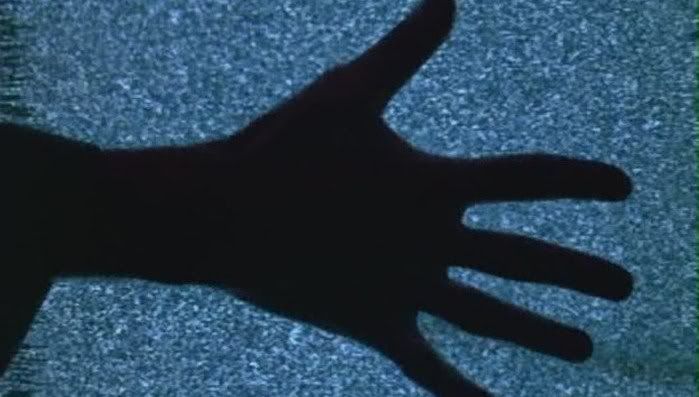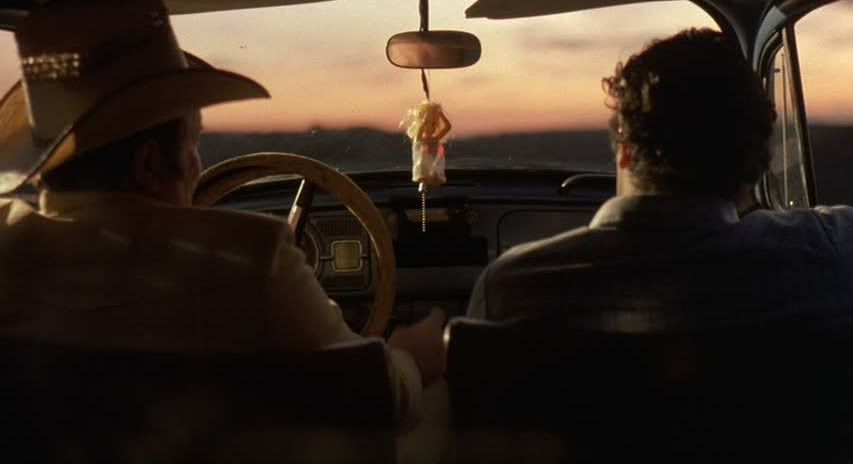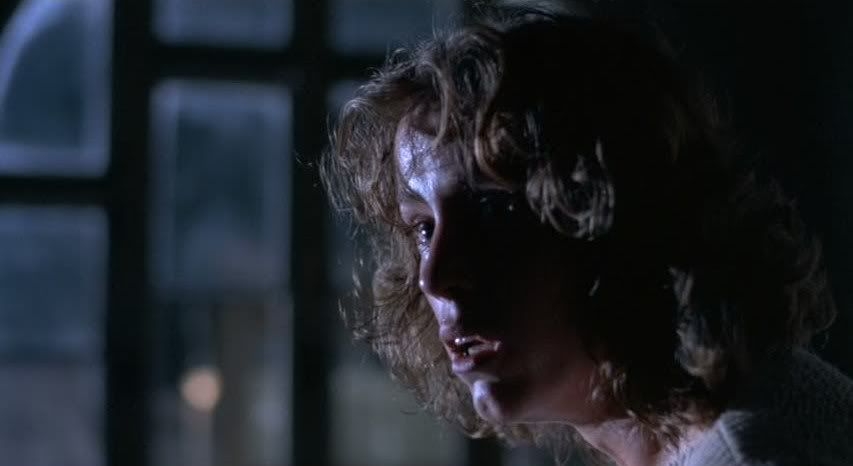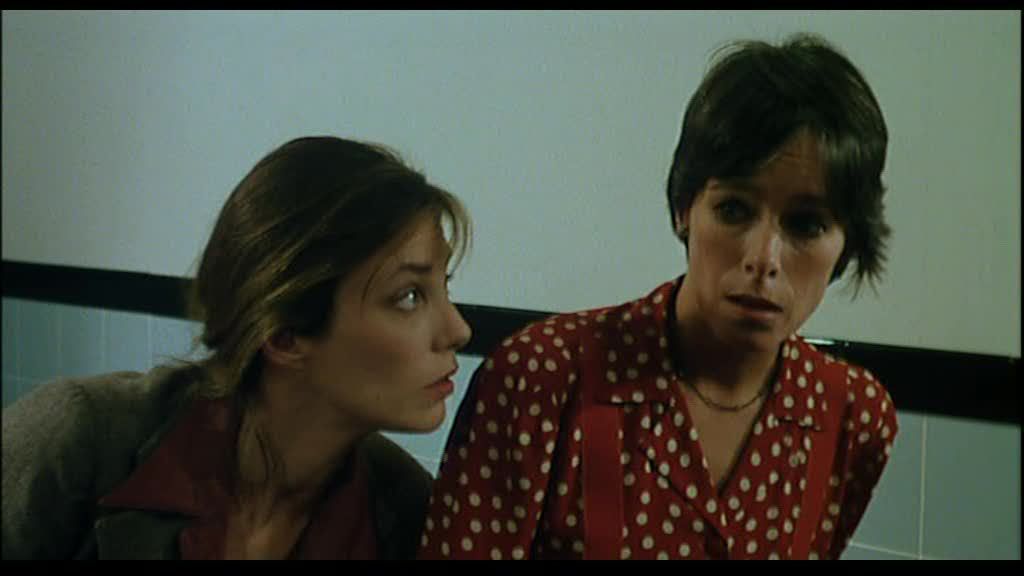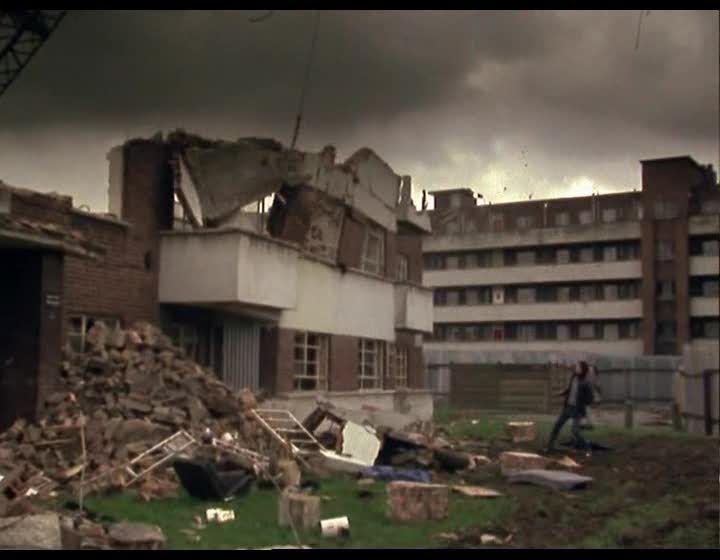
With Raiders of the Lost Ark, Steven Spielberg established a new movie icon, a new larger-than-life hero in the tradition of the pulp adventure. The second movie in this new series, Indiana Jones and the Temple of Doom, immediately announces itself as a very different kind of movie, a very different take on the pulp hero. The film opens with, of all things, a musical number, staged like a Busby Berkeley set piece, with glamorous showgirls in glittery costumes arranging themselves in colorful, shiny patterns within the frame. The song, of course, is "Anything Goes," an appropriate anthem for a film that deliberately erases the line between good taste and bad, casting Indy (Harrison Ford) in an even more absurd, crazy adventure than his first cinematic outing. Within the first twenty minutes of the film, Indy has battled gangsters while surrounded by balloons in a club ballroom, leaped from a window with club singer Willie Scott (Kate Capshaw) in tow, then jumped from a plane with nothing but an inflatable boat to break his fall, before careening off a massive cliff into the river rapids below.
Temple of Doom is also more exaggerated than its predecessor in terms of the supporting characters who accompany Indy on this adventure. While Raiders of the Lost Ark featured cartoonish Nazis as the villains, Indy's allies were the loyal and noble Egyptian guide Sallah and Karen Allen's tough, witty portrayal of Marion Ravenwood. The shrill, helpless Willie Scott is no Marion, though, and Kate Capshaw is no Karen Allen; her character here is basically the butt of jokes about feminine incompetence and greed. When Indy drags her to an Indian palace, investigating the disappearances of many children from a rural village, the first thing she thinks when she sees the wealth and splendor of the palace is to wonder if the maharajah is married. Even worse is the infamous Short Round (Jonathan Ke Quan), a Chinese orphan boy who accompanies Indy on his adventures, and who basically serves as a source of caricatured comic relief with his heavy accent and squeaky catchphrases. The infamous dinner scene — where Willie and Short Round are horrified as their hosts serve giant bugs, eyeball soup, a snake that spills out smaller living serpents when sliced open, and, most memorably, chilled monkey brains, served out of a monkey head with removable scalp — is another example of the film's wallowing in grotesque orientalism.
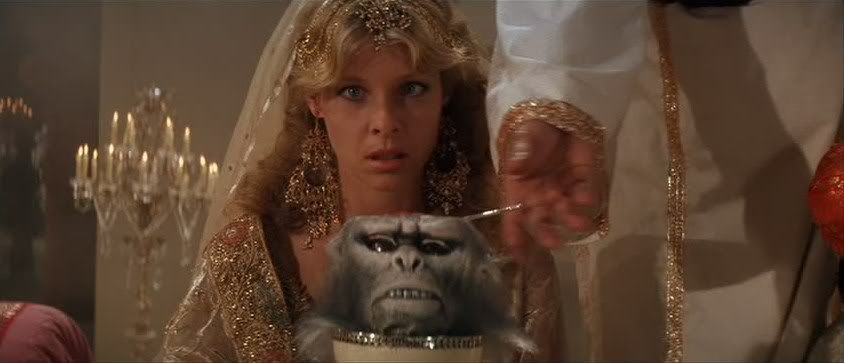
At its best, though, the film's melodramatic outrageousness can be strangely compelling. This is true even of the problematic aspects: the seduction scene between Indy and Willie is hilarious, since it consists of two profound egotists posing and sparring, culminating with Willie throwing her head back, closing her eyes and murmuring that she'll be the best he's ever had. Later, Spielberg indulges in a very different form of excess when the three heroes witness an ancient ritual in which a priest pulls the heart from a man's chest before thrusting the (somehow still living) man into a whirlpool of fire. This scene is all about operatic excess, taking the fiery spiritual climax of Raiders of the Lost Ark as a starting point and simply expanding its red-hued lunacy to even greater lengths.
That exaggeration extends as well to the vision of the slave labor mine that lurks within the temple, where dirty, chained-up children hack at rocks with hammers while being whipped by bare-chested overseers. At one point, Spielberg even conflates voodoo with Indian culture, because basically the evil cult depicted in the film doesn't emerge from any one culture or anything real whatsoever. The cult is instead a vision of every foreign culture, as viewed through the xenophobic eyes of the West, all blended together into a soup of strange customs, blood sacrifices, horrible food, and a pagan obsession with death and destruction. It'd be easy to say that Spielberg is parodying that particular lineage within the pulp fiction genres that he's drawing on, but that doesn't really seem to be the case: he's just delivering a potent and especially ugly vision of the stereotypical foreign bad guy, the villain whose very obvious distance from Western culture is the only source of his evil.
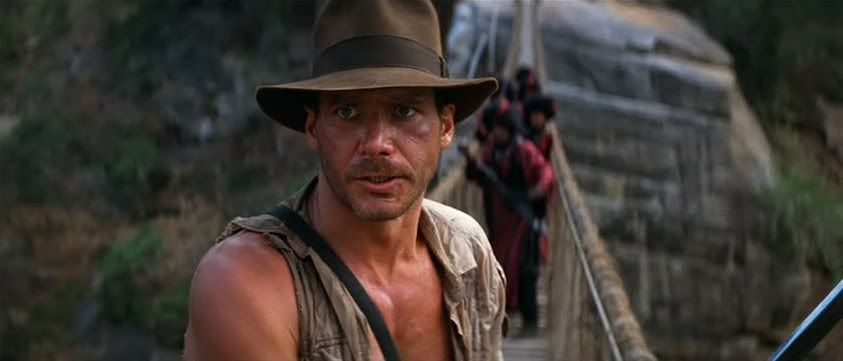
The best part of the film comes at the very end, when Spielberg drops all the campy strangeness and simply embraces the spirited action set pieces that made Raiders so boyishly exciting. The mine car chase sequence is punchy and thrilling, crisply edited and visceral, and Spielberg follows it with an equally tense and well-realized sequence with Indy trapped in the center of a rope bridge, sword-wielding villains advancing on him from either end of the bridge. Spielberg, whose action scenes always have a keen sense of place and spatial relationships, inserts long shots in which the bridge runs across the whole frame, showing Indy as a dot in the middle with the slowly approaching enemies, purple blots in their long robes, closing in on him. The action scenes stacked up towards the end of the film have all the tightly wound intensity of the best Spielberg action sequences, and this consistently exciting final act goes some ways towards redeeming the sometimes slack narrative, annoying characters and orientalist oddities of the rest of the film.
Temple of Doom is well-known as the oddball entry in the Indiana Jones series, at least before the fourth film, The Kingdom of the Crystal Skull. It's a deeply strange and flawed film that, to its credit, doesn't simply repeat the very successful formula of its predecessor but tries to do something different within the pulp lineage. It doesn't always work — an understatement, perhaps — but there's still something hypnotizing about the film's embrace of its own knowing excesses. It's a very inconsistent movie, of course, both in terms of quality and tone: sometimes harrowing and horrific, sometimes barreling forward with no-consequences action, and sometimes goofy and cheery, as when Spielberg nods to the elephant hijinks of Howard Hawks' Hatari!, a film that (as Adam Zanzie first tipped me off to) seems to be very important to his career and his approach to cinema. The film's final shot embraces all these contradictions, as Indy grabs Willie for a kiss (after pulling her to him with his signature whip; kinky!) while Short Round urges an elephant to spray them with water and repeatedly squeals, "very funny!" It's cheesy and ridiculous, especially when Spielberg then pulls back to show a crowd of laughing Indian kids running to embrace the couple. Spielberg's dealing with big, bold images and events here, and the film is packed with clichés and absurdities. That it sometimes overcomes its own ridiculousness to deliver a satisfying action set piece or some other fun bit of business is a tribute to Spielberg's keen instincts showing through.
